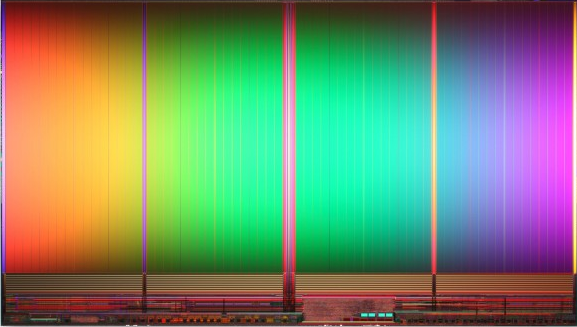Recent years have seen the consolidation of the memory market to three Tier 1 players, Hynix, Micron and Samsung. This consolidation was the result of enormous CAPEX requirements, coupled with a highly volatile commodity, DRAM.
Today’s NAND Flash landscape is broad, compared to DRAM, however possesses the very same traits. Players today include Hynix, Intel, Micron, SanDisk, Samsung and Toshiba. Let there be no confusion, owning the Fab gives these companies a huge leg up in the SSD market.
There are two major components of any SSD’s build of materials, the controller and the NAND flash memory. The higher the SSD’s density, the greater the NAND content, making NAND the primary component in an SSD configuration.
Like DRAM, NAND memory comes in multiple flavors, such as MLC, eMLC and SLC. The Semiconductor companies named above each employ their own proprietary design, performance specifications and manufacturing processes. These suppliers compete against each other, not just in the SSD market, but in the chip market, as the SSD manufacturers who don’t own the Fab have to buy their NAND from one of them.
 While the barrier to entry in the solid state “drive” market is minimal, the barrier to entry in the NAND market is measured in billions of dollars. Investing CAPEX measured in the billions of dollars is not for the feint of heart! Further, companies such as Micron and Samsung have huge investments in DRAM Fabs, which may be converted to NAND Fabs at their discretion.
While the barrier to entry in the solid state “drive” market is minimal, the barrier to entry in the NAND market is measured in billions of dollars. Investing CAPEX measured in the billions of dollars is not for the feint of heart! Further, companies such as Micron and Samsung have huge investments in DRAM Fabs, which may be converted to NAND Fabs at their discretion.
SSD manufacturers must buy their NAND from one of these suppliers. Who do you think has the lower cost basis, the manufacturer or the owner of the Fab? The answer is obvious, and so is the result. Any manufacturer who is competing head-to-head with a Fab owner will have a higher cost of goods, and therefore a price disadvantage.
The good news for SSD manufacturers is that the Semiconductor companies are interested in large volume and little (pre-sales) support, so there remains plenty of market opportunity. The players that own the fab will likely command the “Client” market in SSD, unless the competing manufacturer is willing to conduct business at a (very) low single point margin. Owning the Fab is a huge leg up.
EXAMINING THE SSD INDUSTRY SERIES – LINKED
ABOUT THE AUTHOR
 Wayne Eisenberg served as Vice President of Worldwide Sales and Marketing Communications at SMART Modular Technology from April 2002 until his retirement in 2011 and held other sales management roles at SMART since 1995.
Wayne Eisenberg served as Vice President of Worldwide Sales and Marketing Communications at SMART Modular Technology from April 2002 until his retirement in 2011 and held other sales management roles at SMART since 1995.
Wayne has also held various positions at other high technology companies including Toshiba America CSD, GRiD Systems and Harris Corporation.
He holds a B.A. in Journalism with a minor in Business Administration from California State University at Chico.
Wayne has extensive experience in worldwide sales and international business development, an impressive record of achievement, and has lead sales in all customer segments “ OEM, Channel, and Enterprise “ and, has market and relationship successes in telecom, networking, storage, computing, industrial, and defense/aerospace. Recently, Wayne has accepted the position of OCZ Senior VP Global Sales at OCZ.
 The SSD Review The Worlds Dedicated SSD Education and Review Resource |
The SSD Review The Worlds Dedicated SSD Education and Review Resource | 
Wayne, how do see the competitive landscape for large SSD manufacturers like OCZ and STEC that have enough scale to procure raw NAND wafer and process into chips? Does this bulk purchasing level the playing field and allow superior products to still thrive, despite the slightly higher cost of goods, or will these independents eventually get priced out of the market?
While buying the wafer gives you an edge over those who buy the chip, ultimately those who own the fab win. OCZ and STEC will prosper, not because of their cost base, but because they serve a customer base that requires what they offer.
how soon the Fab owners plus SSD manufacturers go after the same customer base. there is nothing stopping them.
The independents will pick and choose their target markets and customer models, and in this way carve out a niche not (well) served by the Semis. OCZ, for example, certainly has a leg up on other independents who don’t buy wafers and must buy discrete components, as long as flash pricing is stable.
*bill of materials*
Your point is valid as there is certainly associated risk, however the Semis control production and price, and furthermore have considerable resources and deep pockets. The likes of Samsung, Toshiba, Sandisk and Micron will own the “volume” market, and while there will be plenty of room for companies such as OCZ and STEC (and their unique value propositions), they cannot go head-to-head (long term) with the Semis.
It certainly seems logical that a Fab owned SSD mfr. would get the best IC pricing but in the real world of large dysfunctional corporations with distinct P&L owners for the Fab and SSD businesses, I’m curious how much of a deal the owned SSD company actually gets compared to a huge external customer that might take their business elsewhere.
Any chance you have some real world examples you could share regarding the actual cost advantage a Fab owned SSD mfr. enjoys? Or an educated guess?